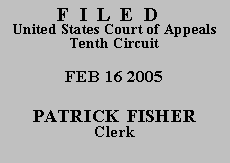

| UNITED STATES OF AMERICA, |
|
| v. | |
| WARREN DOUGLASS VANN, |
|
Warren Vann was charged with and convicted by a jury of the following offenses: Count I: first degree murder in Indian Country, a violation of 18 U.S.C. §§ 1111(a), 1151, and 1153; Count II: the use of a firearm in the commission of a felony, a violation of 18 U.S.C. § 924(c)(1)(A)(iii) and 924(j); Count III: possession of a firearm after former conviction of a felony; a violation of 18 U.S.C. §§ 922(g)(1) and 924(a)(2); and Count IV: possession of ammunition after former conviction of a felony, a violation of 18 U.S.C. §§ 922(g)(1) and 924(a)(2). The district court sentenced him to life imprisonment on Count I, life imprisonment on Count II (to be served consecutively with Counts I, III, and IV), 120 months on Count III, and 120 months on Count IV (to be served concurrently with counts I and III). The court also sentenced him to five years' supervised release on Counts I and II, and three years on each of Counts III and IV (each to run concurrently), and ordered him to pay a special assessment of $400.00 and restitution in the amount of $7,075.20.
Mr. Vann now appeals from his conviction and sentence, and seeks to raise numerous trial errors. Mr. Vann's counsel has filed a brief pursuant to Anders v. California, 386 U.S. 738 (1967), and moves for leave to withdraw as counsel. Mr. Vann has not filed an additional appellate brief. For the reasons set out below, we grant counsel's motion to withdraw and dismiss the appeal.
Anders holds that if counsel finds an appeal to be wholly frivolous after conscientious examination, he may advise the court and request permission to withdraw. Counsel must also submit to both the court and his client a brief referring to anything in the record arguably supportive of the appeal. The client may then raise any point he chooses, and the court thereafter must undertake a complete examination of all proceedings and then decide whether the appeal is in fact frivolous. If the court so finds, it may grant counsel's request to withdraw and dismiss the appeal. See Anders, 386 U.S. at 744.
The Anders brief filed by Mr. Vann's counsel identifies four potential appellate issues: (1) the trial court erred in overruling Mr. Vann's motion to suppress the photo lineup that was presented to a witness, and (2) the trial court erred in refusing to dismiss the charges under Rule 29 of the Federal Rules of Criminal Procedure, on the grounds of insufficient evidence. Counsel also notes that Mr. Vann may have claims of (3) ineffective assistance of trial counsel and (4) ineffective assistance of appellate counsel. Counsel has informed Mr. Vann that such claims should generally be brought in collateral proceedings, and not on direct appeal. See United States v. Galloway, 56 F.3d 1239, 1240 (10th Cir. 1995).
After careful review of the entire proceedings, we agree with counsel that no non-frivolous grounds for appeal appear on this record. The record amply supports the admissibility of the photo lineup. During the investigation of the murder, agents spoke with the next-door neighbor of the victim, Daphne Augare. Ms. Augare indicated that an unknown Native American male of average height, in his late 20's to early 30's, with dark hair and a thin mustache, wearing an olive green jacket and wearing at least two shirts, one maroon in color and one possibly green, and blue jeans, knocked on her back door and asked for a Kyle Johnson. The agents prepared a photo lineup with six individuals, and the neighbor identified the individual in the fifth photo as the unknown male, although she was not 100% sure. With some reservations, Ms. Augare later identified Mr. Vann in a preliminary hearing. At the trial, Ms. Augare identified Mr. Vann, and testified about several other factors that were consistent with identifiable characteristics given by other witnesses in regard to what the defendant was driving and wearing. Our record review reveals that there were multiple witnesses that identified Mr. Vann at the trial, and there were minor discrepancies in the various witnesses' descriptions about whether he wore an Army jacket, a camouflage jacket, or a green jacket. The victim's son's description and identification of Mr. Vann were consistent with Ms. Augare's.
Mr. Vann does not indicate that the photo lineup was in any way suggestive that Mr. Vann was the suspect. Mr. Vann's assertion that such inconsistences regarding his identification presented insufficient evidence to go to the jury is untenable. Cf. Kirby v. Illinois, 406 U.S. 682, 691 (1972) (noting that "[t]he Due Process Clause of the Fifth and Fourteenth Amendments forbids a lineup that is unnecessarily suggestive and conducive to irreparable mistaken identification"). As to the Rule 29 motion, this court reviews de novo the sufficiency of the evidence to support a conviction. United States v. Colonna, 360 F.3d 1169, 1178 (10th Cir. 2004). In doing so, we view the evidence in the light most favorable to the government and determine whether a reasonable jury could have found the defendant guilty of the crime beyond a reasonable doubt. Id. We have reviewed the testimony adduced at trial and conclude the district court properly denied the motion. When the evidence is viewed in the light most favorable to the government, a reasonable jury could readily conclude that Mr. Vann committed each of the crimes charged in the indictment.
Accordingly, we GRANT counsel's motion to withdraw and we DISMISS the appeal.
Entered for the Court,
Robert H. Henry
Circuit Judge
*. This order and judgment is not binding precedent, except under the doctrines of law of the case, res judicata, and collateral estoppel. The court generally disfavors the citation of orders and judgments; nevertheless, an order and judgment may be cited under the terms and conditions of 10th Cir. R. 36.3.